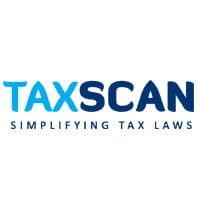Himachal Pradesh HC Overturns Rejection of Manual GST Refund Applications under Rule 97A, orders Reconsideration [Read Order]
The bench observed that Rule 97A of the Central Goods and Services Tax Rules clearly allows for the manual filing of refund applications
![Himachal Pradesh HC Overturns Rejection of Manual GST Refund Applications under Rule 97A, orders Reconsideration [Read Order] Himachal Pradesh HC Overturns Rejection of Manual GST Refund Applications under Rule 97A, orders Reconsideration [Read Order]](https://www.taxscan.in/wp-content/uploads/2024/06/Himachal-Pradesh-HC-Manual-GST-Refund-Applications-under-Rule-97A-Reconsideration-TAXSCAN.jpg)
The Himachal Pradesh High Court has reversed the rejection of manual GST refund applications for the financial years 2017-2018, 2018-2019, and 2020-2021 and mandated a fresh consideration under Rule 97A of the Goods and Services Tax (GST) Rules. The court's decision came in response to a writ petition challenging the refusal to consider GST refund claims for the financial years in question.
The petitioner company, which acquired a business undertaking in October 2020, filed applications for refund via email in May 2022 for the aforementioned financial years. However, the department rejected these applications on three grounds. First, they contended that the company had not filed the required application form, RFD-OI. Second, they argued that the company was not registered under the Central Goods and Services Tax Act, 2017 during the claim period. Finally, the department maintained that refund applications must be filed electronically, and manual applications would not be accepted.
The petitioner challenged these rejections in the petition, arguing that it had informed the respondent on 30.05.2022 that it got registered with GST in October 2020 under the acquisition of a business undertaking from M/s Sozin Flora Pharma LLP, and the eligible ITC reflected in the Electronic Credit Ledger in the books of Sozin was transferred to it by filing ITC-02; that it, therefore, wished to file a GST refund application under the “Inverted Duty Structure” for the financial years 2017-2018, 2018-2019 and 2020- 2021, but since its GST registration was effective from October 2020, it was not able to file GST refund applications through online mode but was forced to apply manually. In support of their argument, the company relied on Rule 97A of the Central Goods and Services Tax Rules, which specifically permits manual filing of applications.
In light of Judgements made by the Bombay High Court in Laxmi Organic Industries Ltd. vs. Union of India & others, as well as the Gujarat High Court in M/s Ayana Pharma Ltd. vs. Union of India, the court held that 97A of the Central Goods and Services Tax Rules prevail and would have to be taken into account by the assessing authority, and he cannot insist on only the electronic filing of refund applications.
The division bench of Chief Justice M.S. Ramachandra Rao and Justice Satyen Vaidya observed that the department could not disregard the provisions of Rule 97A of the Central Goods and Services Tax Rules. This rule clearly allows for the manual filing of refund applications. The court further held that departmental circulars cannot supersede statutory rules framed by competent authorities.
The Himachal Pradesh High Court also addressed the department's argument regarding the company's registration status during the claim period. They referred to sub-section (1) of Section 54 of the Central Goods and Services Tax Act, 2017, which permits "any person" to make an application for a refund of tax. The Court additionally highlighted the relevance of Rule 41 of the Central Goods and Services Tax Rules, which deals with instances of transfer of credit on amalgamation/merger of business/companies.
The bench allowed the writ petition filed by the company and set aside the impugned order passed by the department. The court further directed the department to reconsider the application on merit within four weeks from the date of receipt of the order.
Additionally, the department was directed to pay costs of Rs.10,000/- to the petitioner. The judgement also noted that any pending applications related to the matter would be disposed of accordingly.
To Read the full text of the Order CLICK HERE
Support our journalism by subscribing to Taxscan premium. Follow us on Telegram for quick updates
M/s AMN Life Pvt. Ltd. vs Union of India & others , 2024 TAXSCAN (HC) 1329 , Mr. Bharat Raichandani , Mr. Vijay Arora

